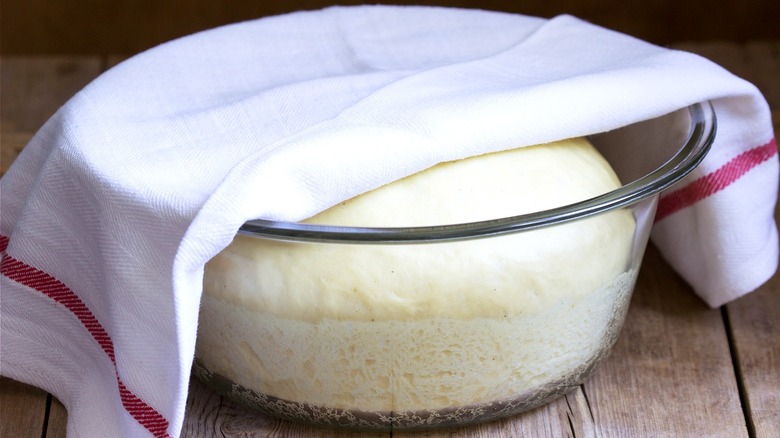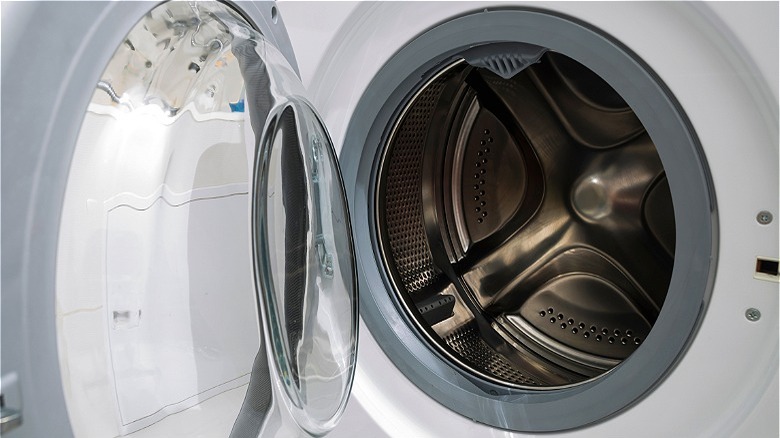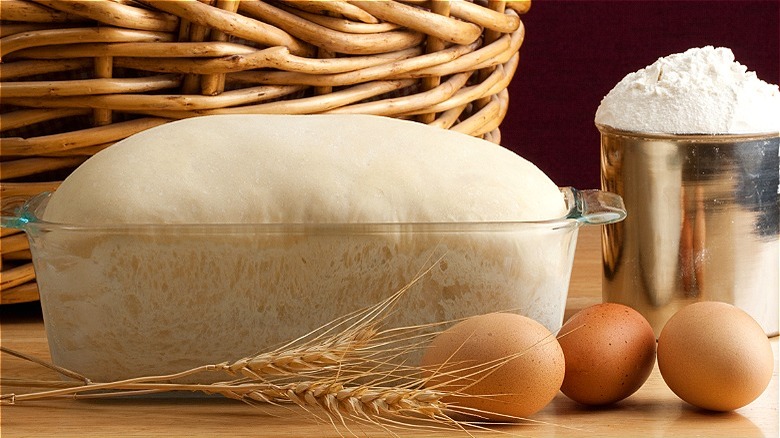Is Proofing Dough In Your Dryer Really A Worthwhile Hack?
Whether you're used to making Pullman bread, honey whole-wheat sandwich bread, or Parker House rolls, most homemade bread recipes include a designated amount of inactive time for proofing. Instant yeast, active dry yeast, and yeast made with sourdough starter all take time to ferment once mixed with flour, water, and any extras added to your particular bread recipe. The chemical interaction that occurs between yeast and flour's carbohydrates is what gives your final bread product that airy texture, which is why proofing is typically an essential step in the bread-making process. Oftentimes, however, waiting 40 to 60 minutes for your bread dough to rise can feel like forever, so why not try speeding up the process with your clothes dryer?
While this method may seem a bit odd, using a clothes dryer to proof bread seems to be more common among foodies than you might guess. Not only has this unusual method been suggested within a few popular food websites' recipes, but even social media networks have acknowledged this proofing technique. For example, one Reddit user claimed their homemade focaccia proofed in no time when placed in their warm dryer.
It's true your dryer may prove to be a tad warmer than standard room-temperature air. But is your clothes dryer really the ideal place to proof your newly mixed bread dough? As it turns out, the temperature of your dryer and your own personal preferences are the most important factors to consider before using this unexpected technique.
Proofing dough in the dryer may work but there's risk
As you consider how to proof bread in the most efficient way possible, you may be curious to know the details behind this dryer-method and if it actually works. To fully get the answer, you need to know the ideal temperature for proofing bread. Between commercial yeasted bread and sourdough varieties, the ideal range for proofing falls anywhere between 70 to 90 degrees Fahrenheit. The potential problem with the dryer-method lies in the uncertainty of its exact temperature when you place your dough inside to ferment.
Your dryer should run without clothes for a few minutes before using it as a proofing vessel. Looking at one popular dryer brand as reference, these appliances can run anywhere between 125 to 135 degrees Fahrenheit. By using the dryer after running it, you risk proofing your dough in an environment that's too warm, which can cause those precious dough bubbles to break down during the fermentation process.
Not only are you running a risk of over-proofing with too much variance in temperature, but the risk may not even be worth it. One Facebook user tested the dryer-method against a standard room-temperature rise and discovered only a small difference between the two techniques. While dough does seem to rise slightly more in a dryer machine, there may be other, more reliable proofing methods worth trying.
How to proof bread without the fuss
If you feel anxious at the thought of placing bread dough in your dryer machine, there are worthwhile, alternative methods of dough-proofing that seem a bit safer and more reliable. The unexpected solution for easily proofing bread in a cold kitchen happens to rely on the use of a specific gardening tool. However, if you'd rather stick to kitchen appliances, there are a few notable ways to create the ideal proofing environment.
Some claim turning your oven to the lowest setting before proofing can create a cozy environment for your dough, but you once again run the risk of making the environment too warm. The lowest temperature for many ovens sits at 170 degrees Fahrenheit. Surprisingly, instead of turning your oven on, all you really need to create the perfect environment for fermentation is a baking pan and some hot water. Simply fill a pan with hot water and place it on the lowest rack of your oven, putting your bowl of dough on the middle rack. Once the oven door has been closed, the humidity from the hot water creates an ideal, makeshift proofing box. Alternatively, you can also heat a cup of hot water in your microwave and then place your dough inside with the door closed. While a dryer machine may work, you ultimately need to decide for yourself if this unusual proofing method creates the best environment for your precious baked goods.


